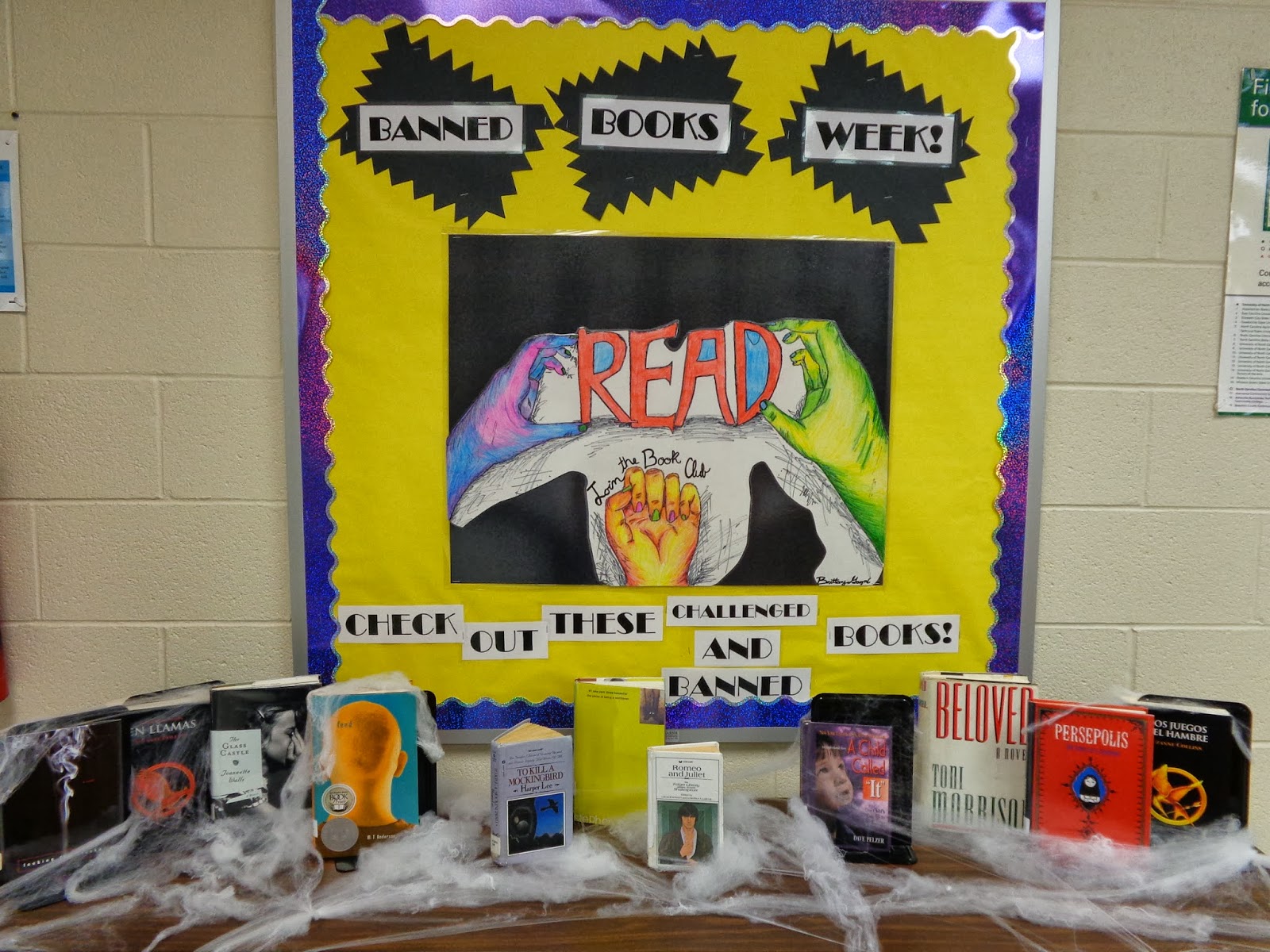 |
| SSS Media Center: Banned Books Week 2013 |
What is "Banned Books Week" anyways?
It's a time to bring awareness to the issue of Censorship.
What is Censorship?
"Censorship is the suppression of ideas and information that certain persons- individuals, groups, or government officials-find objectionable or dangerous."
-American Library Association (ALA)
Typically challenges are motivated out of a wish to shield young people from sexually explicit content or offensive language. While this is important, the ALA's "Library Bill of Rights" explains that, "Librarians and governing bodies should maintain that parents and only parents have the right and the responsibility to restrict the access of their children and only their children to library resources."
"Censorship by librarians of constitutionally protected speech, whether for protection or for any other reason, violates the First Amendment." -American Library Association
Banned Books That Shaped America:
The Adventures of Huckleberry Finn, Mark Twain, 1884
The first ban of Mark Twain’s American classic in Concord, MA in 1885 called it “trash and suitable only for the slums.” Objections to the book have evolved, but only marginally. Twain’s book is one of the most-challenged of all time and is frequently challenged even today because of its frequent use of the word “nigger.” Otherwise it is alleged the book is “racially insensitive,” “oppressive,” and “perpetuates racism.”
Beloved, Toni Morrison, 1987
Again and again, this Pulitzer-prize winning novel by perhaps the most influential African-American writer of all time is assigned to high school English students. And again and again, parental complaints are lodged against the book because of its violence, sexual content and discussion of bestiality.
Catch-22, Joseph Heller, 1961
A school board in Strongsville, OH refused to allow the book to be taught in high school English classrooms in 1972. It also refused to consider Cat’s Cradle as a substitute text and removed both books from the school library. The issue eventually led to a 1976 District Court ruling overturning the ban in Minarcini v. Strongsville.
The Catcher in the Rye, J.D. Salinger, 1951
Young Holden, favorite child of the censor. Frequently removed from classrooms and school libraries because it is “unacceptable,” “obscene,” “blasphemous,” “negative,” “foul,” “filthy,” and “undermines morality.” And to think Holden always thought “people never notice anything.”
Fahrenheit 451, Ray Bradbury, 1953
Rather than ban the book about book-banning outright, Venado Middle school in Irvine, CA utilized an expurgated version of the text in which all the “hells” and “damns” were blacked out. Other complaints have said the book went against objectors religious beliefs. The book’s author, Ray Bradbury, died this year.
For Whom the Bell Tolls, Ernest Hemingway, 1940
Shortly after its publication the U.S. Post Office, which purpose was in part to monitor and censor distribution of media and texts, declared the book nonmailable. In the 1970s, eight Turkish booksellers were tried for “spreading propaganda unfavorable to the state” because they had published and distributed the text. This wasn’t Hemingway’s only banned book – A Farewell to Arms and Across the River and Into the Trees were also censored domestically and abroad in Ireland, South Africa, Germany and Italy.
To Kill a Mockingbird, Harper Lee, 1960
Harper Lee’s great American tome stands as proof positive that the censorious impulse is alive and well in our country, even today. For some educators, the Pulitzer-prize winning book is one of the greatest texts teens can study in an American literature class. Others have called it a degrading, profane and racist work that “promotes white supremacy.”
Uncle Tom's Cabin, Harriet Beecher Stowe, 1852
Like Huck Finn, Of Mice and Men and Gone With the Wind, the contextual, historically and culturally accurate depiction of the treatment of Black slaves in the United States has rankled would-be censors.
Where the Wild Things Are, Maurice Sendak, 1963
Sendak’s work is beloved by children in the generations since its publication and has captured the collective imagination. Many parents and librarians, however, did much hand-wringing over the dark and disturbing nature of the story. They also wrung their hands over the baby’s penis drawn in In the Night Kitchen.
No comments:
Post a Comment